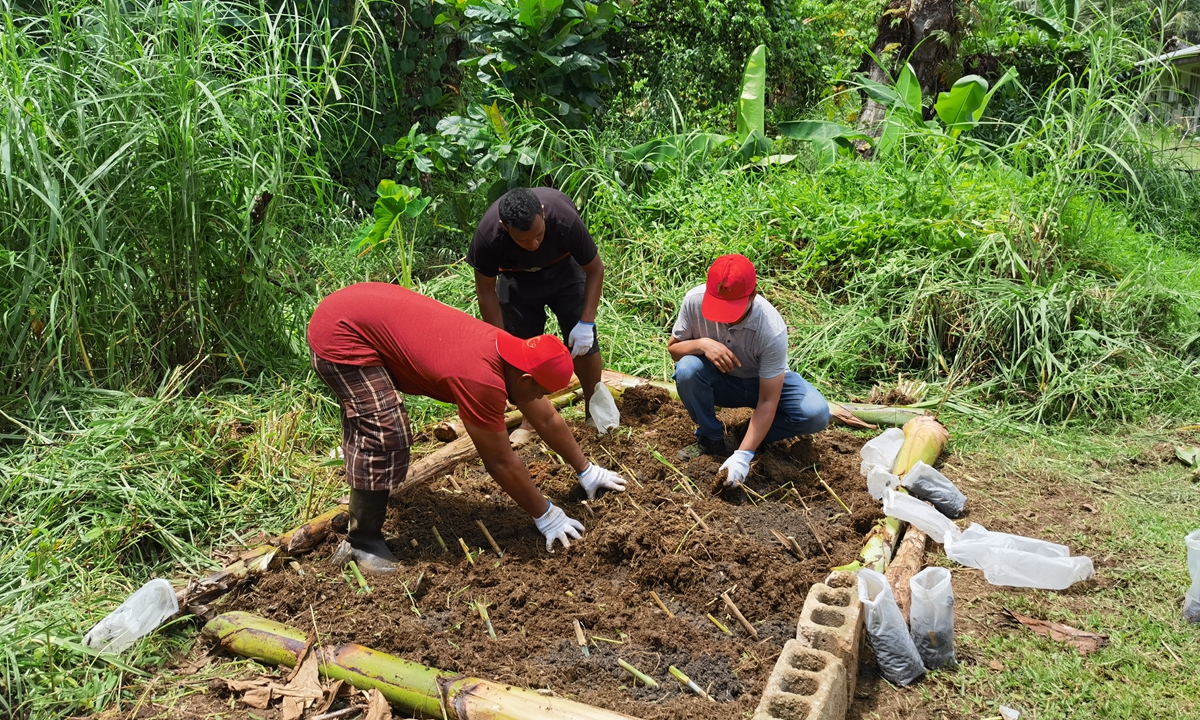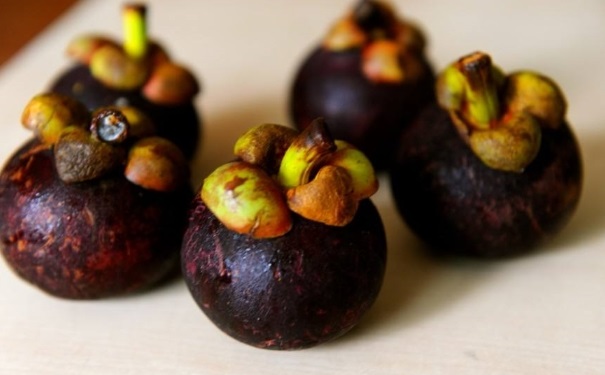China leads the world with largest agricultural germplasm collection: ministry

A Chinese Juncao expert collects local wild Juncao and teaches locals how to propagate and conserve Juncao seeds. Photo: Courtesy of Fujian Agriculture and Forestry University
China reported the world's largest collection in agricultural germplasm resources in the first half of 2024, following a recently concluded national survey, marking a historic milestone in the domain and the country's growing self-reliance in seeds, the Ministry of Agriculture and Rural Affairs (MARA) said.
Data from the ministry showed that China has added 139,000 new crop varieties and 1.19 million livestock, poultry, and aquatic genetic materials to its existing collection, making it the global leader in total agricultural germplasm, China Media Group reported on Tuesday.
In recent years, China has made notable progress in its development of crop varieties by intensifying efforts to identify and create high priority crops, along with increasing support for leading seed enterprises and strengthening intellectual property protection.
As of June, domestically developed white feather broilers have captured market shares of over 25 percent, with South American white shrimp hitting 35 percent, showcasing notable progress in reducing reliance on imported varieties and advancing seed innovation, per the ministry.
Leading Chinese seed companies are rapidly advancing, contributing to over 60 percent of the new varieties that meet national standards. The national seeds supply now cover more than 75 percent of the country, with the high-quality compliance rate exceeding 98 percent, the ministry announced.
Agricultural germplasm resources, which encompass crops, livestock, and aquatic species, are crucial for securing sufficient food supply for the country, analysts said.
In 2023, China collected more than 530,000 agricultural germplasm resources during a general survey on these resources through a comprehensive assessment of resource types, quantities, distribution, characteristics, and their changes over recent decades, according to Xinhua News Agency.
The ministry announced that China has recently established a new national crop germplasm resource center and a marine fisheries germplasm resource bank, with additional facilities for livestock and freshwater fisheries set to open next year.
The developments will enhance the country's strategic ability to preserve resources and meet agricultural demands for the next 30-50 years, said Yang Haisheng, deputy director of the seed industry management department under the ministry.
Yang emphasized the ministry's commitment to achieving greater technological self-reliance and independent control over seed sources, aiming to achieve further milestones by 2025 with comprehensive improvements across the Chinese seed industry.
In 2021, China issued an action plan to revitalize its seed industry through a technological self-reliance bid. Since that time, the central government's No. 1 Document has emphasized accelerating the effort every year.
The ministry noted that newly added specimens will be further analyzed to identify genes that offer high yield, quality, and disease resistance, which will be used to develop breeding materials, boosting innovation in the seed industry and reinforcing China's world-leading position in the sector.
Global Times
图说省实党建之窗
- 09-241277木耳泡了两天还能吃吗 泡了两天的木耳能不能吃
- 09-24353牡丹皮有什么功效?牡丹皮的功效与作用及禁忌症
- 09-2412532017年有倒春寒吗 倒春寒有多久
- 09-242716心跳过慢是什么原因 心跳太慢是怎么回事
- 09-24605青豆的功效作用有哪些 吃青豆的好处是什么
- 09-24588出汗后多久可以洗澡 流汗过多久可以洗澡
- 09-241080蚝油是什么做的 蚝油做菜应该怎么用
- 09-24334口吃有时候说不出来怎么回事 口吃会说不出话来吗
- 09-241233便秘的治疗方法是什么 产妇便秘注意事项有哪些
- 09-24195胆固醇高有什么危害?胆固醇高的危害


